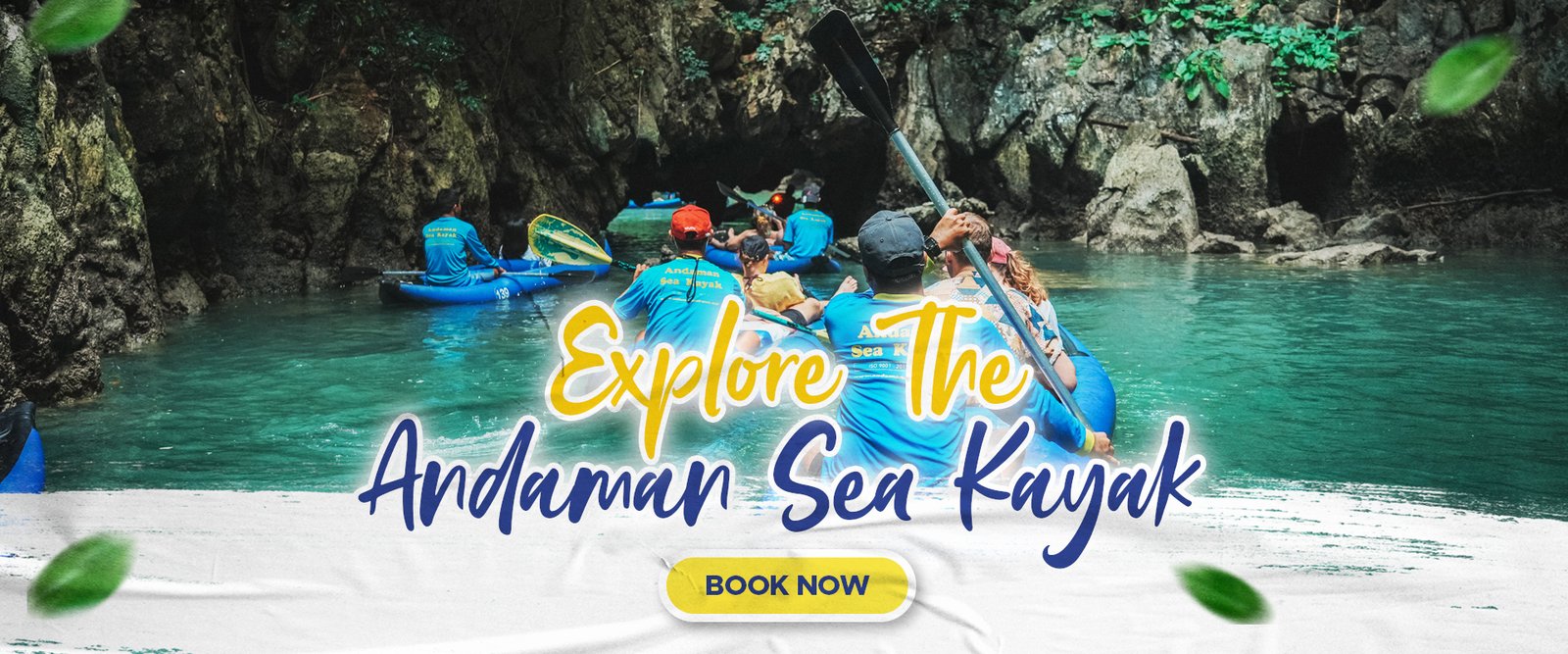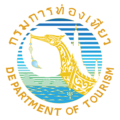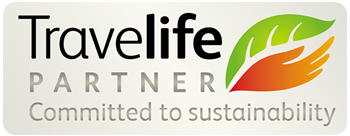How to Paddle Efficiently on a Sea Kayaking Trip

How to Paddle Efficiently on a Sea Kayaking Trip: Expert Tips from Andaman Sea Kayak
Exploring the emerald waters and hidden caves of Phang Nga Bay by kayak offers an unparalleled adventure that connects you with Thailand’s natural beauty. However, to fully enjoy this experience, mastering efficient paddling techniques is essential. In this comprehensive guide, the expert guides at Andaman Sea Kayak share professional techniques to enhance your paddling efficiency, ensuring you make the most of your sea kayaking expedition in the stunning Phang Nga Bay.
Understanding the Fundamentals of Efficient Sea Kayak Paddling
The Importance of Proper Kayak Paddling Technique
Efficient paddling not only reduces fatigue but also enhances your overall kayaking experience. When exploring the magnificent limestone formations and hidden lagoons of Phang Nga Bay, proper technique allows you to navigate with greater control while conserving energy for the entire 7-hour journey.
“Our staff are the locals who really love our hometown. We got deep knowledge and understanding of the sea and ready to share you,” explains the Andaman Sea Kayak team, who have guided countless visitors through these pristine waters.
Basic Paddling Biomechanics: Using Your Core, Not Just Your Arms
A common misconception among kayaking beginners is that paddling strength comes primarily from the arms. In reality, efficient paddling draws power from your core muscles:
- Engage your torso: Rotate your upper body as you paddle, using your stronger core muscles rather than relying solely on arm strength.
- Maintain proper posture: Sit upright with your back straight against the kayak seat for better leverage and power transfer.
- Position your feet: Press your feet against the footrests to create a stable platform for torso rotation.
Essential Kayak Paddling Techniques for Phang Nga Bay Exploration
The Forward Stroke: Your Primary Propulsion Technique
The forward stroke is the fundamental paddling technique you’ll use approximately 90% of the time during your Phang Nga Bay kayaking adventure. Mastering this stroke is critical for efficient movement through the turquoise waters:
- Entry phase: Insert the paddle blade fully into the water at your feet, with the blade face perpendicular to the kayak.
- Power phase: Pull the blade through the water alongside the kayak using torso rotation rather than pulling with your arms.
- Exit phase: Remove the blade from the water when it reaches your hip, then repeat on the opposite side.
“When you finish the trip, you will love Phangnga Bay like we love,” the local guides at Andaman Sea Kayak emphasize. Their expert instruction ensures you’ll develop an efficient paddling rhythm, allowing you to focus on the breathtaking scenery rather than technique.
The Sweep Stroke: Essential for Navigating Around Limestone Formations
When exploring the intricate cave systems and navigating around the towering karst formations of Phang Nga Bay, the sweep stroke becomes invaluable:
- Forward sweep: Extend the paddle forward and move it in a wide arc away from the kayak’s bow to the stern.
- Reverse sweep: Start at the stern and sweep the paddle toward the bow.
- Combination sweeps: Use alternating sweep strokes on opposite sides for controlled turning in tight spaces.
The Draw Stroke: Perfect for Maneuvering in Sheltered Lagoons
The hidden lagoons (locally known as “hongs”) of Phang Nga Bay often require precise maneuvering in confined spaces. The draw stroke helps you move the kayak sideways:
- Extended draw: Reach out to the side with your paddle blade facing the kayak.
- Pull motion: Draw the water toward your kayak without changing the angle of the blade.
- Recovery: Slice the blade out sideways or perform a sculling draw for continuous lateral movement.
Adapting Your Paddling Technique to Phang Nga Bay Conditions
Paddling in Different Sea and Weather Conditions
Phang Nga Bay experiences varying conditions throughout the day, and adapting your paddling technique accordingly ensures safety and efficiency:
- Calm waters: In protected areas between islands, use a relaxed forward stroke pace to conserve energy.
- Tidal currents: Adjust your angle of approach when crossing currents, aiming slightly upstream of your destination.
- Wind considerations: Lower your paddle angle in headwinds to reduce resistance, and use a higher angle in tailwinds to capture more power.
Navigating Through Caves and Tunnels Safely
Andaman Sea Kayak’s tours are famous for exploring the magnificent caves and tunnels that penetrate the limestone karsts:
- Short, controlled strokes: Use shorter paddle movements in confined cave spaces.
- Hand navigation: In extremely narrow passages, use your hands against the cave walls to guide your kayak.
- Team coordination: Follow your Andaman Sea Kayak guide’s instructions for timing your entry into caves with appropriate tide levels.
“Our team take excursion time to clean up the sea… Don’t throw anything overboard and no more single use plastic. So we can enjoy more sustainable future,” the Andaman Sea Kayak team reminds visitors, highlighting their commitment to preserving these natural wonders.
Advanced Efficiency Techniques for Multi-Hour Kayaking Tours
Energy Conservation Strategies for the 7-Hour Journey
Andaman Sea Kayak’s full-day tours last approximately 7 hours, making energy conservation crucial:
- Rhythmic paddling: Develop a sustainable paddling cadence that you can maintain throughout the day.
- Rest intervals: Take advantage of natural breaks when your guide explains points of interest.
- Alternating intensity: Vary your paddling intensity, using stronger strokes when needed and relaxing in calmer sections.
Proper Hydration and Nutrition for Sustained Paddling
Maintaining your energy levels throughout the day is essential for efficient paddling:
- Hydration schedule: Drink water regularly throughout the tour, even if you don’t feel thirsty.
- Energy foods: Enjoy the provided meals and snacks that Andaman Sea Kayak offers during the tour.
- Electrolyte balance: In the tropical Thai climate, replacing electrolytes lost through perspiration is important.
“During the trip you will cruise by one of our comfortable escort boat,” notes Andaman Sea Kayak, ensuring you’ll have access to refreshments and breaks throughout your adventure.
Equipment Considerations for Optimal Paddling Efficiency
Selecting the Right Paddle for Your Body Type
Andaman Sea Kayak provides equipment suited to different body types and experience levels:
- Paddle length: A properly sized paddle allows for efficient strokes without overreaching.
- Blade size: Smaller paddlers generally benefit from smaller blades, while larger individuals can handle larger blade surfaces.
- Grip position: Place your hands shoulder-width apart on the paddle shaft for optimal leverage.
Adjusting Your Kayak for Maximum Comfort and Efficiency
Before departing on your Phang Nga Bay kayaking adventure, ensure your kayak is properly adjusted:
- Seat position: Adjust your seat to support proper posture and enable effective torso rotation.
- Footrest placement: Position footrests so your knees are slightly bent, allowing for proper leg engagement.
- Balance distribution: Distribute your weight evenly for optimal kayak stability in the water.
“Safety services are provided by having customers wear life jackets,” Andaman Sea Kayak emphasizes, ensuring your safety while allowing comfortable movement for efficient paddling.
Developing Your Skills: Progressive Paddling Improvement
From Novice to Confident Paddler
Many visitors to Andaman Sea Kayak are first-time kayakers, but the expert guides help everyone progress quickly:
- Initial instruction: Begin with basic strokes and focus on proper form before building speed.
- Guided practice: Receive real-time feedback from experienced local guides who understand Phang Nga Bay’s unique environment.
- Confidence building: Progress from protected waters to more open areas as your skills improve.
Common Paddling Mistakes and How to Correct Them
Even experienced kayakers can develop inefficient habits. Be aware of these common issues:
- Gripping too tightly: Relax your grip on the paddle to prevent arm fatigue and wrist strain.
- Inadequate torso rotation: Remember to rotate from your core rather than pulling with your arms.
- Improper blade angle: Keep the paddle blade perpendicular to the water during the power phase of your stroke.
The Cultural and Environmental Context of Kayaking in Phang Nga Bay
Understanding the Natural Heritage You’re Exploring
Phang Nga Bay is not just a stunning kayaking destination but also an ecologically significant area:
- Limestone karst ecosystem: These ancient formations host unique wildlife and plant species.
- Mangrove forests: The coastal mangroves serve as crucial nurseries for marine life and protect shorelines.
- Tidal influences: The dramatic tidal changes in the bay create the fascinating phenomenon of accessible caves and hidden lagoons.
“Phang Nga Bay, located in southern Thailand, is one of the world’s most breathtaking kayaking destinations,” Andaman Sea Kayak proudly shares, highlighting why efficient paddling skills help you fully appreciate this natural wonder.
Responsible Kayaking Practices in Sensitive Environments
Andaman Sea Kayak is committed to eco-friendly exploration:
- Minimal impact paddling: Avoid touching fragile cave formations or disturbing wildlife.
- Leave no trace: Follow your guide’s example in preserving the pristine environment.
- Respect local communities: Observe cultural sensitivities when paddling near traditional fishing areas or inhabited islands.
“Save the future of the nature for all. We want our children to be able to enjoy them too,” emphasizes the Andaman Sea Kayak team, highlighting their dedication to sustainable tourism practices.
Preparing Physically and Mentally for Your Kayaking Adventure
Pre-Trip Physical Conditioning
While Andaman Sea Kayak tours accommodate all fitness levels, some basic preparation enhances your experience:
- Core strengthening: Focus on exercises that build core stability and rotational strength.
- Upper body endurance: Develop shoulder and back stamina through swimming or light resistance training.
- Flexibility work: Improve torso rotation and shoulder mobility through targeted stretching.
Mental Approaches to Efficient Paddling
The psychological aspects of paddling efficiency are often overlooked but equally important:
- Mindful paddling: Remain present and aware of your body’s movements and the surrounding environment.
- Rhythmic breathing: Synchronize your breath with your paddle strokes for greater efficiency.
- Stress management: Stay relaxed and focus on the joy of experiencing Phang Nga Bay’s natural beauty.
Specialized Paddling Techniques for Photography and Nature Observation
Stabilizing Your Kayak for Photography
Many visitors to Phang Nga Bay want to capture stunning photos of the limestone formations, hidden caves, and emerald waters:
- Low brace position: Use a low brace with your paddle when you need stability for photography.
- Partner stabilization: In tandem kayaks, coordinate with your partner to maintain stability.
- Equipment protection: Follow your guide’s advice on waterproofing cameras and phones.
Quiet Paddling for Wildlife Observation
The ecosystems of Phang Nga Bay support diverse wildlife that you might encounter during your kayaking adventure:
- Silent stroke technique: Minimize paddle splash by using a gentler entry and exit.
- Reduced paddle drip: Twist your wrists slightly when lifting the paddle to minimize disruptive water drips.
- Group spacing: Maintain appropriate distance from wildlife and follow your guide’s instructions.
Conclusion: Mastering the Art of Sea Kayaking in Phang Nga Bay
Developing efficient paddling techniques transforms your sea kayaking experience from merely physical exercise to an immersive journey through one of Thailand’s most spectacular natural wonders. With the expert guidance of Andaman Sea Kayak’s local team, you’ll quickly master the fundamentals while gaining insights into the ecological and cultural significance of Phang Nga Bay.
“Andaman Sea Kayak is committed to provide our clients with the finest service in the unforgettable memories, breathtaking sights and maximum adventure. However, we never lose sight to our commitment to the preservation of our surrounding by providing an environment friendly experience,” states the company, reflecting their dedication to both customer experience and environmental stewardship.
By implementing the paddling techniques outlined in this guide, you’ll conserve energy, maintain better control of your kayak, and have more opportunity to appreciate the stunning scenery around you. From the moment you first dip your paddle into the crystal-clear waters until your return, efficient paddling enhances every aspect of your Phang Nga Bay adventure.
Whether you’re a first-time kayaker or an experienced paddler, Andaman Sea Kayak’s 1238 positive reviews attest to their expertise in providing unforgettable experiences for all skill levels. Book your tour today and discover why their combination of expert guidance, environmental commitment, and spectacular destinations makes them “the best choice in Phang-Nga Bay.”
This comprehensive guide was crafted based on the expertise of Andaman Sea Kayak’s local guides, who have extensive experience navigating the hidden caves and lagoons of Phang Nga Bay. For more information or to book your kayaking adventure, visit their website or contact them directly.







